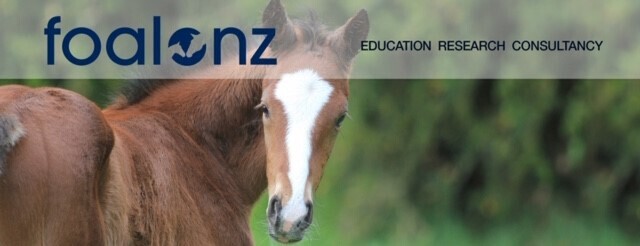The thoroughbred industry is made up of many different sectors in specialised fields. Foal NZ are dedicated to improving the performance of race horses through foal education, behavioural research and farm consultancy. The team provides foals the very best start to their racing careers by using gentle, scientifically-proven training methods that are recognised as world-leading techniques in thoroughbred foal behaviour.
Horses are prey animals and to survive in moments of threat they are compelled to either flee, freeze or fight (or a combination thereof) to ensure survival. These instincts have not altered in the six thousand years since domestication.
When working with thoroughbreds we can see, when placing the horse under some stress, what the horse’s natural tendency is. A horse that tends toward flight will, under pressure, be more reactive and mobile. They will move their feet more readily and frequently and show more alarm behaviours (snorting/eyes widening etc).
A horse that tends toward freeze or fight will often initially appear to shut down, move less and seem less responsive. If the pressure continues to escalate, the horse will then be forced into a more obvious fight response (ears back/defensive behaviours).
When we arrived at Justine’s to meet her weanlings Amie and Bruce, they were both quietly waiting in the box.
When we approached the boxes Amie had her rump towards the door and appeared to be ignoring us, whereas Bruce had his head over the door to greet us. He was curious, interactive and mobile whereas Amie’s reactions were far more introspective and guarded.
As you will see in the videos of them having their first introduction to tying up, Amie is more inclined to freeze and Bruce to move toward flight.
Although our process of training will be similar with each horse, their process of learning and way of reacting will differ. It is endlessly fascinating to us just how unique every horse is in their perception of the world and their reaction to it.
Before we begin to train a horse to learn to tie up, they first need to understand how to yield to pressure on their halter. All horses will instinctively respond to pressure with an opposition reflex; that is, they will naturally react against the pressure instead of yielding to it.
This can be seen when we pull hard on the leadrope to try and coerce a horse onto a truck, only to see the horses head go up and their feet move backward, or when we watch a horse that is scared in the barriers lean on the sides of the starting gates.
By taking the time to help the horse learn to yield to the pressure, we set them up to succeed when leading/tying/loading/yielding to ridden aids and being safe in the barriers.
Once the young horse has cemented his/her learning about how to yield to pressure on not only the halter, but on different parts of their bodies, we can then progress to helping them learn how to be tied.
We do this gradually, as you see in this initial training session, then we progress to removing ourselves from the stable while the line is looped through a fixed point and eventually tie them to an inner tube so we avoid any impact-related injuries.
When placing pressure on the horses, we must be mindful that we prevent them from bracing against our pressure. Once they learn to brace (for example, to lift their heads and lean into the pressure on their poll before stepping forward to lead/tie), this, with repetition, becomes a physical block in their bodies, and prevents them from reaching their full athletic ability.
Given our focus is on creating successful racehorses, we want to ensure they are relaxed through their body and in their mind.
When we understand our horses we can make more informed choices when we are educating them. It is a privilege and also a responsibility when horses are learning new behaviours with us as we influence how they feel for the rest of their lives. Horses learn from their reactions to past experiences and build habits and behaviours based on this.


